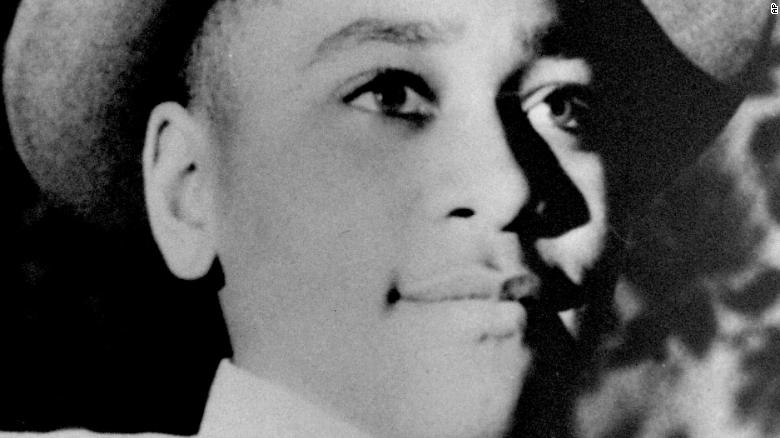Washington (CNN)Mia Pierson wiped tears from her eyes as she left an exhibit dedicated to Emmett Till at the National Museum of African American History and Culture on Thursday.
More than six decades later, the wounds from Emmett's brutal death still sting, said Pierson, a family therapist from California.
Emmett was 14 when he was killed, the same age as many members of the youth group Pierson and her colleagues led through the museum.
"I see Emmett Till, and I see someone who could easily be one of our kids," said Erica Smith, who was part of the group, G1 ministries from Inglewood, California, who made the trek to the nation's capital.
In 1955, Emmett was beaten and murdered in Mississippi by two white men who were acquitted but later admitted to the heinous crime. The Justice Department, in a report revealed this week, told Congress that it has reopened the investigation into Emmett's death, citing "the discovery of new information."
Justice officials have declined to elaborate or explain what new information has been discovered. Both of Emmett's accused killers have died.
The exhibit dedicated to Emmett occupies an almost sacred space at the National Museum of African American History and Culture. It's tucked into a small corner of the section showing life in the Jim Crow South, past the films of white racists beating black men at lunch counters, the segregated rail cars and a tower from Louisiana's notorious Angola prison. Meant to evoke Emmett's memorial service, the mood is somber. Pictures are prohibited.
In a museum dedicated to an often painful history, the message seems clear: Emmett's death, and the civil rights movement it helped inspire, require a special respect, even reverence. Emmett's casket stands in the middle of the room, open for all to see, as it was in 1955.
"I thought of Emmett Till," Rosa Parks once said, before she became a civil rights icon for refusing to give up her seat on a segregated bus, "and I could not go back."
News that the Justice Department plans to go back and investigate Emmett's death -- six decades later -- was met with a wide range of emotions at the museum on Thursday, from satisfaction to suspicion.
"These wounds will never heal," said Regi Tyner Sr., from Washington, D.C., as he left the Emmett exhibit. "It's alright to move forward with the investigation, but it still hurts. It hurts deeply."
Tyner said the fact that Emmett's killers escaped justice is particularly painful.
"They came and took this young man out of a house, in front of his relatives, and did whatever they wanted to do. That hurts deep. It's so painful I can't even really talk about it," he said.
Micah Griffie, from Pittsburgh, took her 10-year-old son, Michael, through the Emmett Till exhibit, explaining who Emmett was and why he was killed. For years, the story was that Emmett had whistled at a white woman at a store. But in a book published last year, the woman, Carolyn Bryant Donham, recanted parts of her account.
Griffie told her son that the men who killed Emmett "had hatred in their hearts."
"The big thing about this story is that when things like this happen," Griffie explained, "the funeral director or the police will say, 'Let's have a closed casket.' But the mom had courage to open the casket and let the world see what happened to her baby. It was an expression of: This needs to stop."
Christina Ford, who, like Pierson, was with the G1 group from California, cried as she thought about the decision by Emmett's mother, Mamie Till-Mobley, to keep her son's casket open for five days, refusing to hide the disfigured face of racial brutality.
"Let the people see what I have seen," Mobley said, in a quote prominently displayed at the entrance to the exhibit. "I think everybody needs to know what happened to Emmett Till."
"The fact that she was brave enough to do that," Ford said, brushing away a tear. "I hope our kids can see that and understand her part of this story."
Pierson said she harbors some doubts about the Justice Department's investigation.
"As a nation, we know who did it and we certainly know that they are guilty," she said, referring to Roy Bryant and his half-brother, J.W. Milam, the two men who told a magazine a year after the murder that they committed the crime.
"So what would this investigation tell us that we don't already know? Would it be helpful to see all the answers there in black and white? I guess so. But if there is no new evidence, that could lead to more anger and frustration."
Growing up in Cleveland, Harold Kenney, 79, said he remembers hearing news reports about Emmett's death. Kenney was 16 at the time, just a few years older than Emmett.
Kenney said he considered Emmett's murder a cautionary tale at the time. After returning from service in the Korean War, he told the military he would not serve on a base in the American South.
"I was willing to go to jail in the military, the stockade," Kenney said, "to avoid being stationed in the South." He was assigned to Omaha, Nebraska, instead.
Asked about the investigation, Kenney said he was skeptical.
"This happened 60 years ago," Kenney said. "I'm trying to think what it could be that would lead them to think they could reopen the investigation and move forward with justice," Kenney said.
"If anything, and I hate to say this, but it may be a Republican approach, saying 'We want to do something.' And that may be very hollow. "







